Millets - Types of Millets, Benefits, Nutrition Information
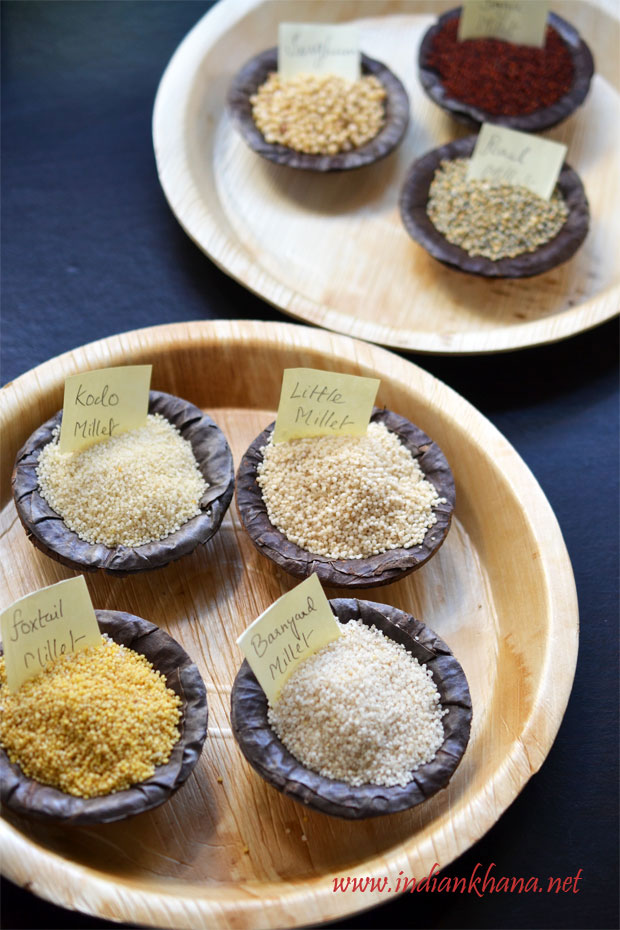
Millets - Millets or Siruthaniyam varieties are all about today post. I use millets for a long time though not all the millets that I am going to talk about today but 3-4 millets are very regular and I always keep stock, about that I will talk later in that post. Millets are not very popular other than Bajra, Jowar and Ragi and in all the millets Bajra (Pearl Millet) is most popular. Now a days millets are again gaining it's movement and people bringing more aware of it and today we going to learn about few millets which we can include in our diet, there are plenty of other millets too which hopefully I can cover some time soon.
Millets are a group of highly variable small-seeded grasses, widely grown around the world as cereal crops/ grains. Millet is tiny in size and round in shape and can be white, gray, yellow or red like you can see in pictures. Millets are very high in their nutrition content. Each millets are three to five times nutritionally superior to rice and wheat in terms of proteins, minerals and vitamins. Millets are rich in B vitamins, calcium, iron, potassium, magnesium, zinc, also gluten-free and has low-GI (Glycemic index) thus millets are suitable for people allergies/intolerance of wheat. Also for diabetic, weight loss millets are excellent.
For thousands of years, millets has been growing such as Pearl millet, Barnyard millet, Sorghum, Foxtail millet, Little millet, Kodo millet, Proso millet and now ANI (Millet Network of India) promotes milets as Nutri-cereals instead of Coarse Cereals. Here some interesting facts about millets other than that they are gluten-free, highly nutritious, millets need very little water for their production, short growing period under dry, high temperature conditions and that's why in India, Africa, Asia millets are more popular. Millets also required rich soils for growth, no millet attracts any pest hence they have no or low fertilizer usage and pest-free. I did lot of research to write more about these millets, main sources are from google, wiki, whfoods.
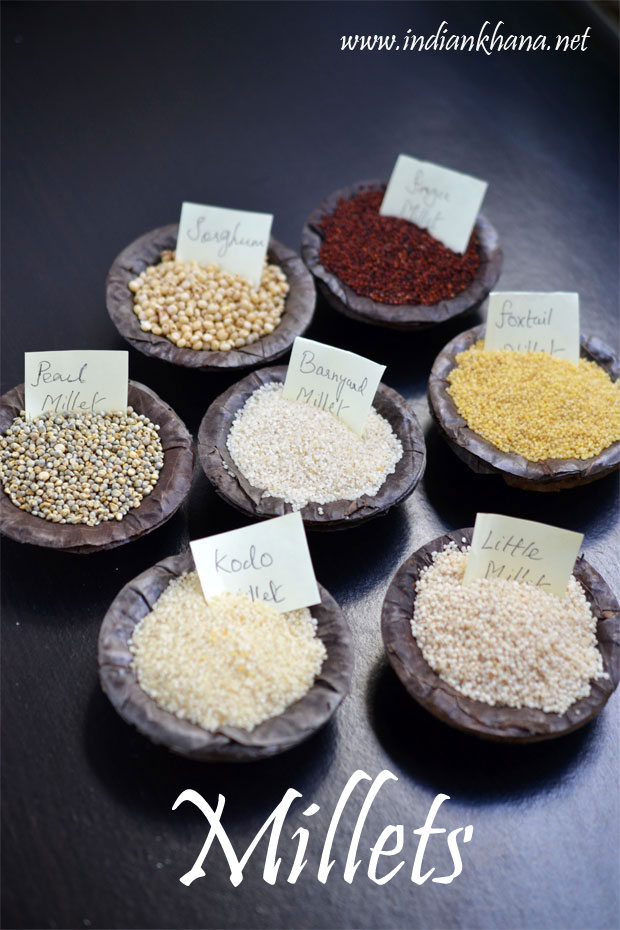
Millets Types and Name in Different Languages
| English | Pearl Millet | Finger Millet | Foxtail Millet | Kodo Millet | Little Millet | Barnyard Millet | Sorghum |
| Hindi | Bajra | Nachani, Mundua, Mandika, Marwah | Kangni, Kakum, Rala | Koden, Kodra | Kutki, Shavan | Jhangora, Sanwa | Jowar |
| Tamil | Kambu | Kezhvaragu, Kelvaragu, Keppai, Ragi | Thinai | Varagu | Saamai | Kuthiravali (Kuthiraivolly) | Cholam |
| Telugu | Sajjalu | Ragula, Ragi Chodi | Korra | Arikelu, Arika | Sama, Samalu | Udalu, Kodisama | Jonna |
| Kannada | Sajje | Ragi | Navane | Harka | Saame, Save | Oodalu | Jola |
| Malayalam | Kambam | Panji Pullu | Thina | Koovaragu | Chama | Kavadapullu | Cholam |
| Marathi | Bajri | Nagli, Nachni | Kang, Rala | Kodra | Sava, Halvi, Vari | - | Jowari, Jondhala |
| Punjabi | Bajra | Mandhuka, Mandhal | Kangni | Kodra | Swank | Swank | Jowar |
| Gujarati | Bajri | Nagli, Bavto | Kang | Kodra | Gajro, Kuri | - | Jowari, Juar |
| Bengali | Bajra | Marwa | Kaon | Kodo | Sama | Shyama | Jowar |
| Oriya | Bajra | Mandia | Kanghu, Kangam, Kora | Kodua | Suan | Khira | Juara |
Where to buy and store - Millets are available in Organic shops and also in some super markets specially in India. Store millet in an airtight container in a cool, dry and dark place, where it will keep for several months.
Millets Benefits
Millets are rich in B vitamins, calcium, iron, potassium, magnesium, zinc, also gluten-free
Helps to lower type 2 diabetic and reduces the risk of heart disease
Millets are a great source of starch, making it a high-energy food. It is also an excellent source of protein and fiber.
Millets are mostly pest-free and low fertilizer used in growth (widely comes in Organic form)
Millets Recipes - Millets can be cooked as we make rice and serve with dal, sambar, rasam or any curry of our choice. We can also make various dosa, idli, upma, pongal, pulao, sweets from millets, they can also be use in baking. I will post few millets recipe regularly so we can include millets in our diet in more exciting way.
Millets Nutrition Facts per 100gms
Crop / Nutrient | Protein(g) | Fat (g) | Fiber(g) | Minerals(g) | Iron(mg) | Calcium(mg) | Calories (kcal) |
Pearl Millet | 10.6 | 4.8 | 1.3 | 2.3 | 16.9 | 38 | 378 |
Finger Millet | 7.3 | 1.5 | 3.6 | 2.7 | 3.9 | 344 | 336 |
Foxtail Millet | 12.3 | 4 | 8 | 3.3 | 2.8 | 31 | 473 |
Kodo Millet | 8.3 | 3.6 | 9 | 2.6 | 0.5 | 27 | 309 |
Little Millet | 7.7 | 5.2 | 7.6 | 1.5 | 9.3 | 17 | 207 |
Barnyard Millet | 11.2 | 3.9 | 10.1 | 4.4 | 15.2 | 11 | 342 |
Sorghum | 10.4 | 3.1 | 2 | 1.6 | 5.4 | 25 | 329 |
Proso Millet | 12.5 | 2.9 | 2.2 | 1.9 | 0.8 | 14 | 356 |
Rice | 6.8 | 2.7 | 0.2 | 0.6 | 0.7 | 10 | 362 |
Wheat | 11.8 | 2 | 1.2 | 1.5 | 5.3 | 41 | 348 |
Pearl Millet | Bajra | Kambu
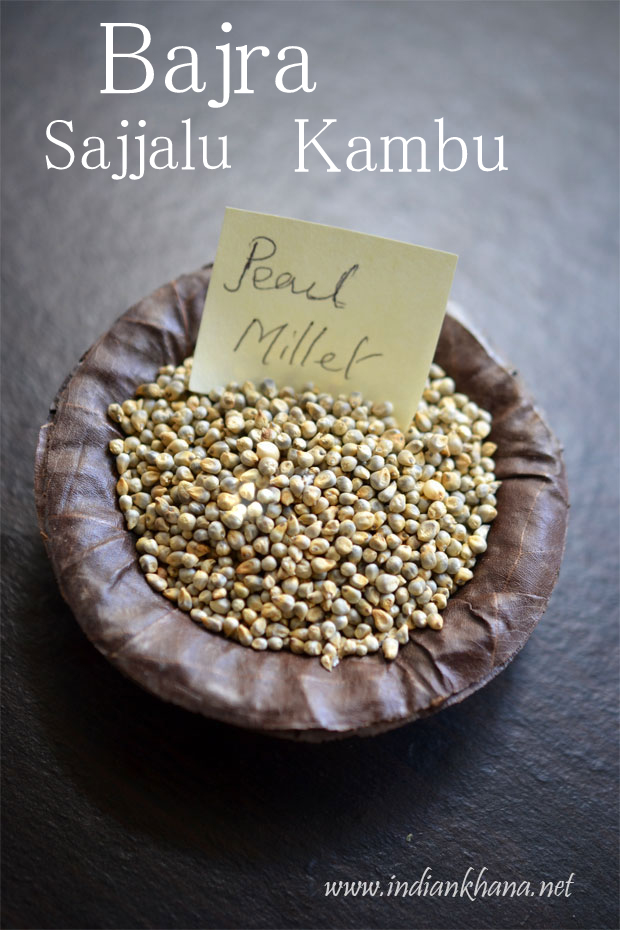
Pearl millet is the most widely grown type of millet and India is largest producer of pearl millet. Pearl millet is a rich source of phosphorus, which plays an important part in the structure of body cells. Consumption of pearl millets helps in minimizing the risk of type 2 diabetes. Being a good source of magnesium, millets act as a cofactor in a number of enzymatic reactions.
Finger Millet | Nachani | Kezhvaragu
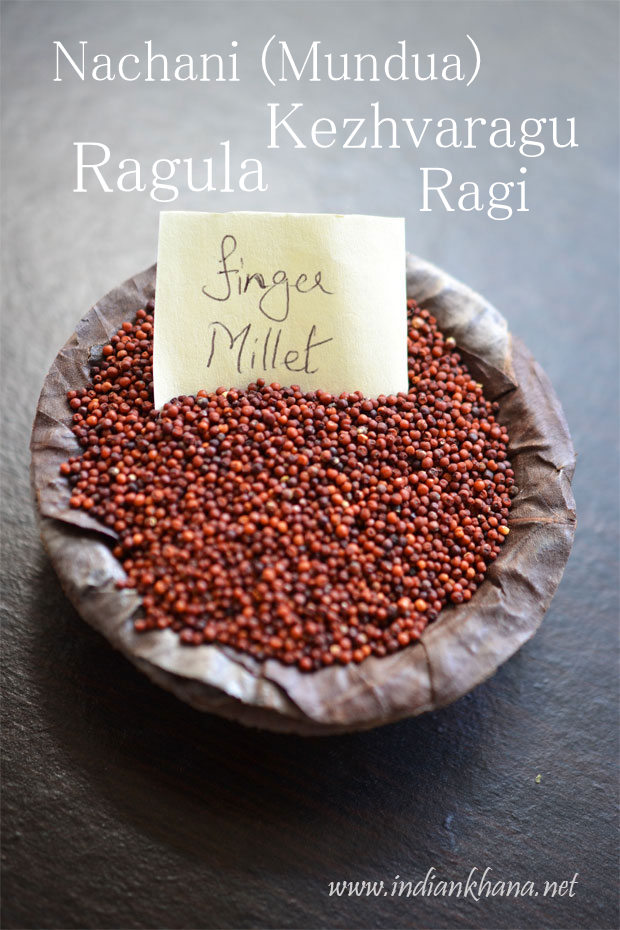
Also known as African finger millet, red millet, ragi and very popular millet specially in Southern India. It is rich in calcium and protein and also have good amount of iron and other minerals. Ragi tops in antioxidant activity among common Indian foods, Ragi also has some good number of Essential Amino Acids (EAA) which are essential for human body.
Foxtail Millet | Kangni | Thinai
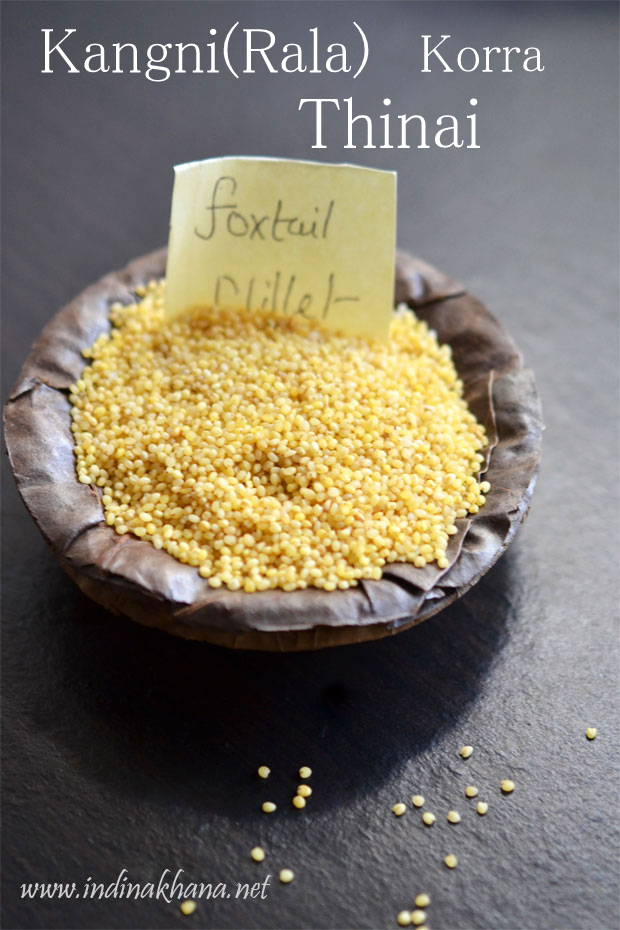
Foxtail millets are high in Iron content and these millets are totally pest-free. Foxtail not only not need any fumigants, but act as anti pest agents to store delicate pulses such as green gram. They also control blood sugar and cholesterol levels & increase HDL cholesterol.
Kodo Millet | Kodra | Varagu
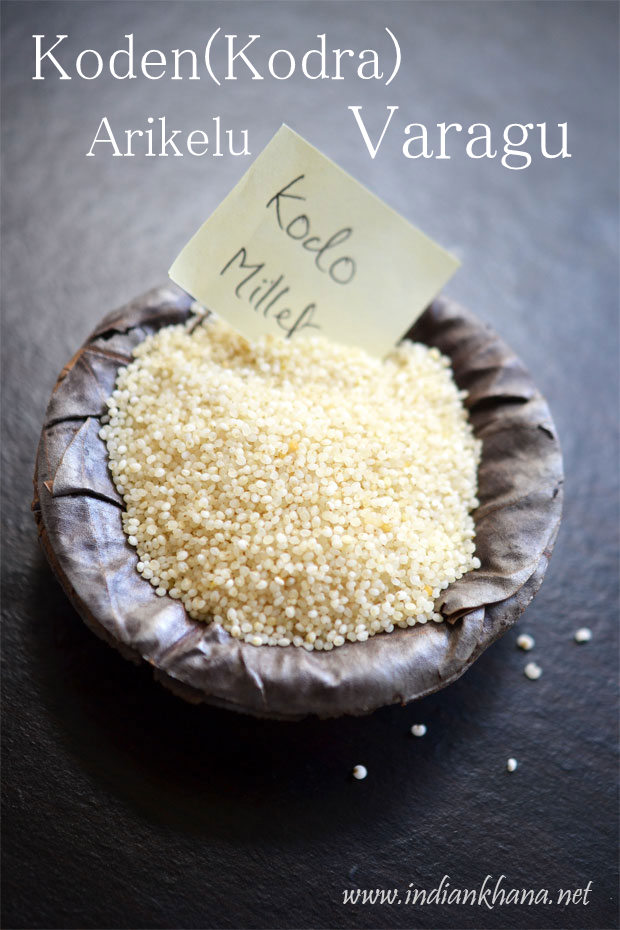
Kodo millets contain high amounts of polyphenols, an antioxidant compound, they also has high on fibre, low on fat. Kodo millet inhibited glycation and cross-linking of collagen. Kodo millets are good for diabetes.
Little Millet | Kutki | Saamai
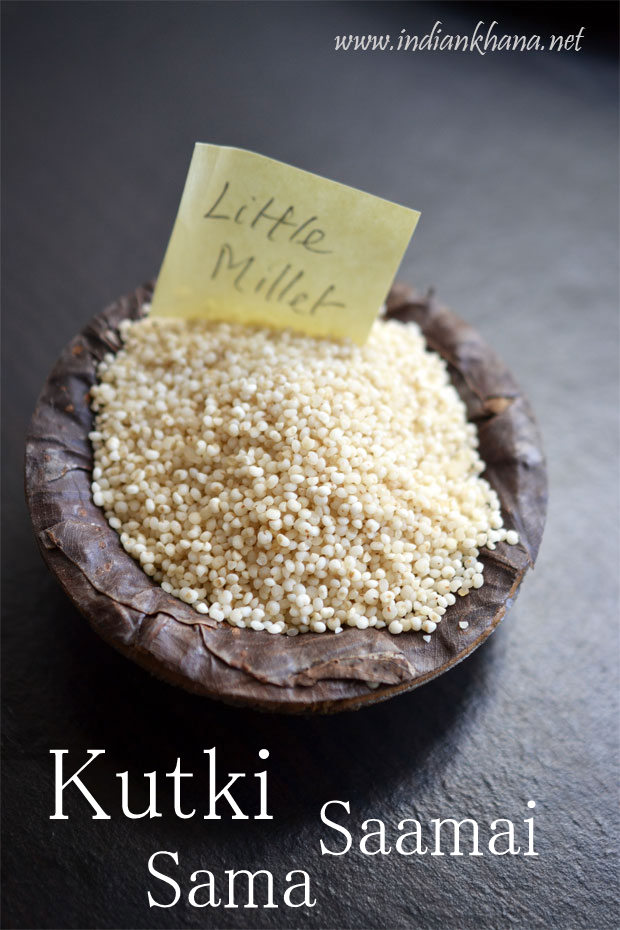
Little Millets seeds are smaller than other millets, like foxtail millet, little millet also high in Iron content, high in fibre like Kodo and has high antioxidant activity. It helps in diabetes and diseases related stomach.
Barnyard Millet | Jhangora | Kuthiravali
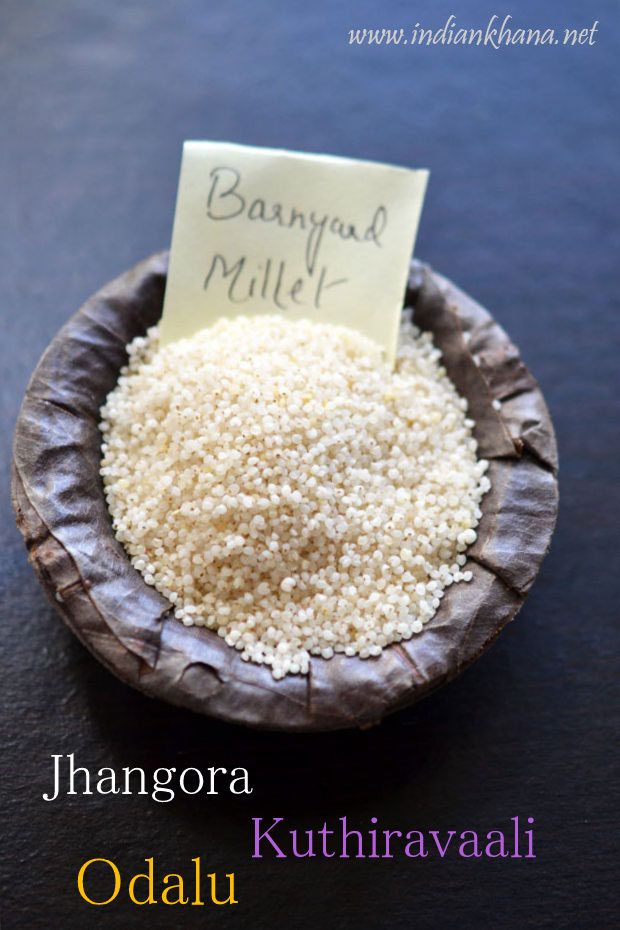
Barnyard millets are high in fibre content, phosporous and calcium. Bardyard has low glycemic index and thus helps in type 2 diabetes, cardiovascular disease with regular intake of this millet.
Sorghum | Jowar | Cholam
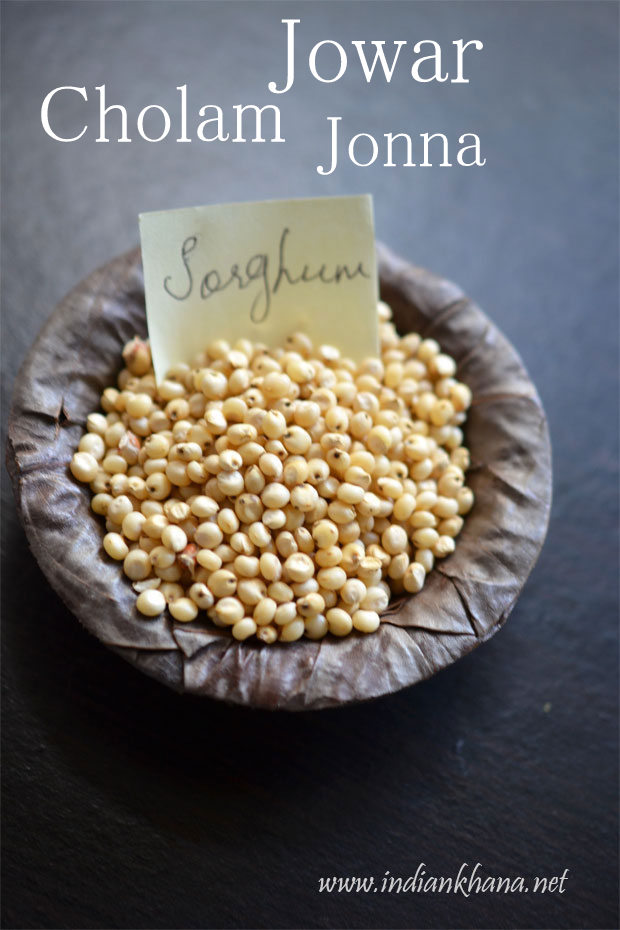
Sorghum is another one of the ancient cereal grain, and grown mostly for their fodder value. Sorghum has high nutritional value, with high levels of unsaturated fats, protein, fiber, and minerals like phosphorus, potassium, calcium, and iron. It's also high in calories and macronutrients, jowar has more antioxidants than blueberries and pomegranates. Sorghum helps to improve metabolism.
Check out all Millets Recipes here
millets variety, types of millets, millets benefits, millets nutrition value, millets facts, Siruthaniyam variety, sorghum benefits,little millets benefits,barnyard millet benefits,foxtail millets benefits,kodo millets benefits,finger millet benefits,pearl millet benefits,healthy millets, indian millets types,Sirudhaniyam Unnavu Vagaigal,




Very interesting information on Millets.
ReplyDeletePls post the glycemic index value chart for every millet
ReplyDeleteYou can find GI details online
Deletevery good explanation everyone should eat for healthy life and best environment
ReplyDeleteThank you for sharing valuable information.
ReplyDeleteGlad you find it useful.
DeleteGlad you find it useful.
DeleteWell article on millets and grains. It clearly explained which millets are useful for various health problems and also given nutrition facts..Thank you
ReplyDeleteGlad you find it useful.
Delete